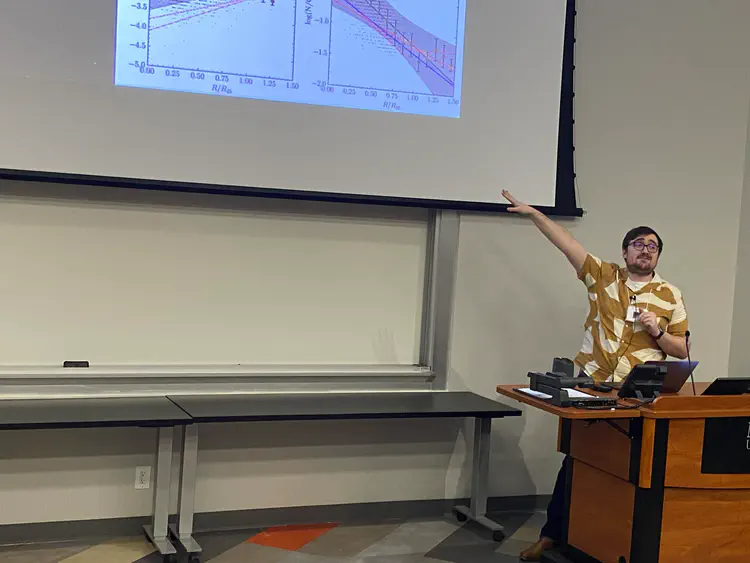NGC 628 in SIGNALS: Explaining the Abundance-Ionization Correlation in HII Regions
 Image Credit: ESO, A. McLeod et al.
Image Credit: ESO, A. McLeod et al.Abstract
The variations of oxygen abundance and ionization parameter in HII regions are usually thought to be the dominant factors that produced variations seen in observed emission line spectra. However, if and how these two quantities are physically related is hotly debated in the literature. Using emission line data of NGC 628 observed with SITELLE as part of SIGNALS, we use a suite of photoionization models to constrain the abundance and ionization parameters for over 1500 HII regions throughout its disk. We measure an anticorrelation between these two properties, consistent with expectations, although with considerable scatter. Secondary trends with dust extinction and star formation potentially explain the large scatter observed. We raise concerns throughout regarding various modeling assumptions and their impact on the observed correlations presented in the literature.


